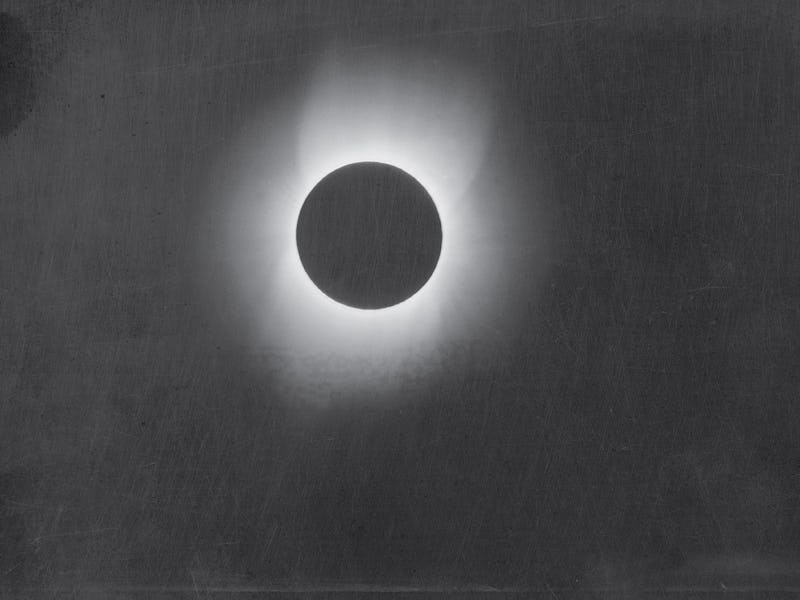People Used to Think Solar Eclipses Were Terrifying
Here's how they reacted in ancient Assyria, Persia, and more.

Over 3,000 years ago, Mesopotamian historians wrote that “the sun was put to shame.”
That sounds pretty harsh, considering that the sun has little control over when the moon’s transit might temporarily pass in front of our radiant star and obstruct its light, resulting in a total solar eclipse. This Mesopotamian event, which occurred in 1375 BCE (but possibly 1223 BCE), is one of the earliest documented eclipses in human history, but certainly not the last one to confuse or unsettle humans. If you don’t already know, the next time the sun will be put to shame — aka the next total solar eclipse — will occur across North America on August 21, 2017.
What follows are other instances of humans reacting to these once-cryptic and unpredictable celestial events.
1302 BCE: Shang Dynasty Eclipse
In early Chinese history, historians documented that “three flames ate the sun, and big stars were seen.” The flames the scribes refer to may have been the sun’s fiery corona, or atmosphere, which becomes visible around the moon during a total solar eclipse.
Like conditions in China thousands of years ago, during this summer’s eclipse — if you’re in the path of totality — it will become dark enough for the stars to come out.
763 BCE: The Assyrian Eclipse
The Assyrians were hit with a pretty long eclipse, which lasted for five minutes. This summer’s eclipse will completely block out the sun for a maximum of 2 minutes and 40 seconds, in Carbondale, Illinois.
Around the same time of the Assyrian’s eclipse — likely in the same month — chroniclers wrote that there was an “insurrection in the city of Ashur.” Perhaps the long darkening event emboldened insurrectionist spirits…
557 BCE: The Siege of Larissa
Temporarily darkened skies may have given the Persians the advantage they needed to overtake the Median city of Larissa. Historian Xenophon wrote, “…A cloud, however, overspread the sun and hid it from sight until the inhabitants abandoned their city; and thus it was taken.”
1135 CE: King Henry’s Eclipse
King Henry I, son of William the Conqueror, ruled England for 35 years, until he fell ill while on a hunting trip in France. The King may have made matters worse for himself by consuming lampreys against his doctor’s advice. The day before Henry died, a total solar eclipse darkened England, giving many folks an ominous feeling: “Men were greatly wonder-stricken and were affrighted, and said that a great thing should come thereafter. So it did, for the same year the king died on the following day after St Andrew’s Mass-day, Dec 2 in Normandy.”
1831 CE: Nat Turner’s Eclipse
On February 12, 1831, an American slave named Nat Turner experienced an annular eclipse, meaning the moon moved into the center of the sun but did not cover it completely, leaving a “ring of fire” effect in the sky. Turner took this mystical phenomenon as a sign that he should organize a murderous uprising against the slave-holding society. Later that year, Turner’s band of slaves killed his master and his master’s family, and over the next two days they proceeded to kill dozens more people. Turner was captured and executed, and the Civil War wouldn’t begin for another 30 years.
1879 CE: Battle of Isandlwana
At 2:29 p.m. on January 22, 1879, an annular solar eclipse darkened the battle field as war raged between 20,000 Zulu warriors and an over-matched group of 1,800 British soldiers.
In one Zulu warrior’s account, he said, “The sun turned black in the middle of the battle; we could still see it over us, or should have thought we had been fighting till evening. Then we got into the camp, and there was a great deal of smoke and firing. Afterwards the sun came out bright again.”
The British, profoundly outnumbered, met a catastrophic defeat.